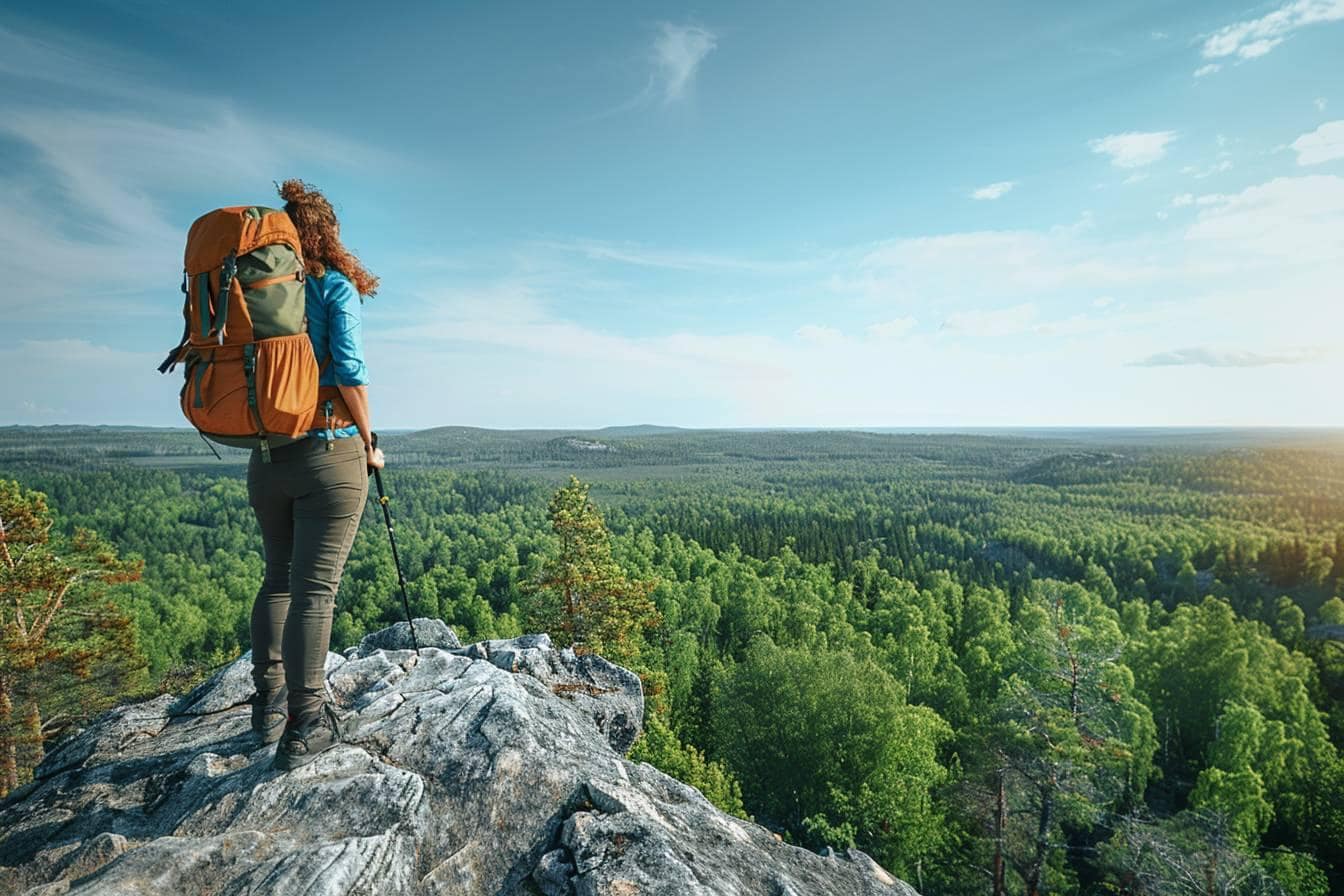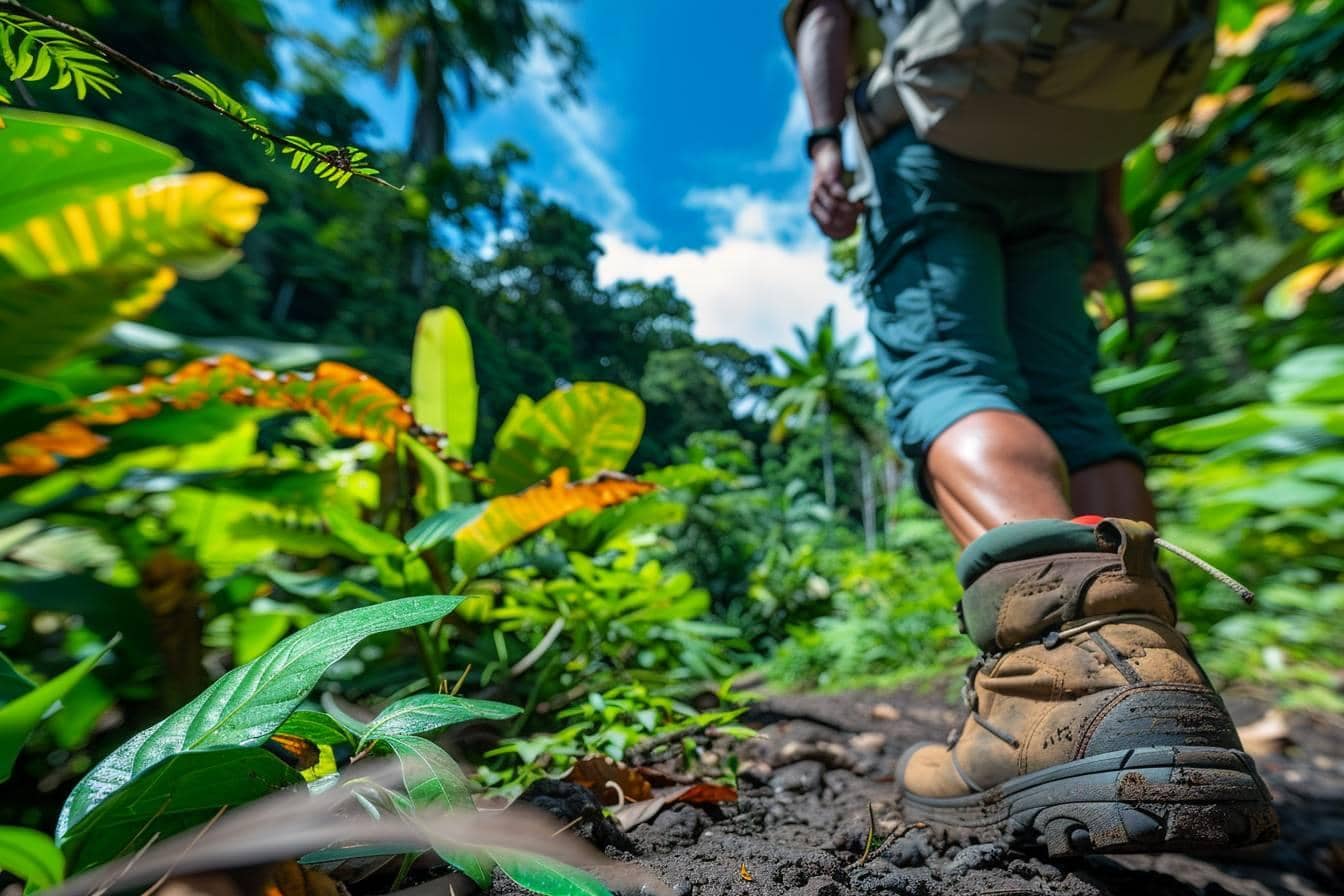When it comes to embarking on a hiking adventure in Bali, especially if you’re eyeing the awe-striking trails that lead you around volcanoes, there’s a lot more to consider than just lacing up your boots and heading out.
I’ve spent significant time trekking across various terrains, but Bali’s unique landscape offers both beauty and challenges that require special preparation.
From my first awe-inspiring hike up Mount Batur at sunrise to the tranquil walks through the rice terraces of Sidemen, each step taught me valuable lessons about safety, preparation, and respect for nature.
In this article
- Ensuring proper footwear and staying hydrated
- Mastering navigation: maps and GPS
- Preparing for weather and volcanic activity
- Embracing the local hiking etiquette
- The importance of leaving no trace
Ensuring proper footwear and staying hydrated
I cannot stress enough the importance of proper footwear and hydration for any hike. In Bali, where the terrain can vary from paved paths to loose volcanic ash, sturdy, comfortable hiking shoes that provide good grip are indispensable.
I remember once slipping on a patch of moss-covered stones near a waterfall—a quick reminder that Bali’s beauty comes with its share of natural hurdles.
Bali’s humidity can be a force to reckon with when it comes to hydration. Even on cooler mountain paths, I depleted my water reserves quicker than expected. Always pack more than you think you’ll need, and if you’re hiking a popular trail, there’s often the chance to refill at small warungs along the way.
A little local tip: bring a reusable water bottle and purification tablets or a filter to minimize plastic waste and ensure your water is safe to drink.
Mastering navigation: maps and GPS
Navigating Bali’s trails can sometimes feel like unraveling a mystery — each turn offering a new, hidden vista or path. That’s why having a reliable map and GPS system is crucial.
On my trek to Mount Agung, I relied heavily on physical maps and GPS to ensure I stayed on track. The dense jungle can sometimes obscure landmarks, making it easy to veer off course. Thankfully, technology has made it easier for us adventurers to keep our bearings, even in the most remote locations.
Learning to read the terrain and combining that with digital navigation tools can make the difference between a successful hike and getting lost in the wilderness.
Plus, it’s a fantastic way to discover hidden gems that aren’t always marked on tourist maps. I’ve stumbled upon secluded waterfalls and untouched forests by trusting my navigation skills (and a bit of luck).

Preparing for weather and volcanic activity
Weather forecasts in Bali can be as unpredictable as a coin toss. I’ve seen clear skies turn into torrential downpours within the hour. Therefore, checking the weather before heading out and preparing for all conditions is vital. This includes packing rain gear and understanding that weather conditions can greatly affect volcanic activity levels.
Bali is home to active volcanoes, and volcanic activity can fluctuate. Keeping abreast of any warnings or advisories issued by local authorities is non-negotiable.
My planned hike to the summit of Mount Agung was postponed due to heightened volcanic activity, a clear reminder of nature’s untamed force. It was a humbling experience that taught me to always respect the environment and the inherent risks of outdoor adventures.
Embracing the local hiking etiquette
During my travels, I’ve learned that embracing local customs and hiking etiquette can enrich the experience. In Bali, this means greeting fellow hikers with a smile and a polite “Selamat pagi” (good morning) or “Terima kasih” (thank you) when passing by. Trails can be narrow, and showing kindness and respect goes a long way.
Moreover, engaging with local guides or hikers can offer insights into the hidden histories of the trails and the land around them. I once enjoyed hiking with a guide who shared stories of Bali’s spiritual connection to nature, transforming the hike into a journey through the island’s cultural heart.
The importance of leaving no trace
I firmly believe in the Leave No Trace principles, especially in places as ecologically diverse as Bali. The island’s beauty is its treasure, and preserving it requires effort from every visitor.
Simple practices like packing out your trash, staying on marked trails to avoid damaging flora, and not disturbing wildlife can make a significant difference.
On a hike to Sekumpul Waterfalls, I was disheartened to see litter along the path. It reminded me of our collective responsibility to protect these natural wonders for future generations to explore and enjoy.
In Bali, as in any destination, the key to a rewarding and safe hiking experience lies in preparation, respect for the environment, and an open heart ready to embrace the journey. Each trek offers the physical exertion of the climb and the spiritual fulfillment of connecting with nature.
For me, capturing these moments through my lens and sharing them is a way to invite others into the extraordinary world of adventure travel, highlighting the importance of sustainable and conscious exploration.
So, lace up those hiking boots, fill up your water bottle, and embark on a journey into Bali’s breathtaking landscapes — it’s an adventure that awaits.




